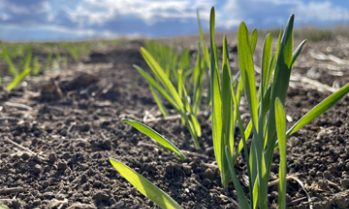Quality Coverage
Quality is factored in when calculating yield-loss. A designated grade has been established for each crop based on a historical average grade. When the grade of your harvested production is lower than the designated grade due to an insurable peril, that production is reduced by a quality factor and is used in calculating your claim. Quality factors are determined by comparing the price of the harvested grade to the price of the designated grade. The prices used to calculate quality factors are the post‑harvest selling prices established through a survey of grain companies and processors from across Saskatchewan.
The Saskatchewan Crop Insurance Corporation (SCIC) provides coverage for quality losses on insured crops. Producers who think they may have a claim due to loss in quality are encouraged to contact their local Crop Insurance office and register the claim before the November 15 deadline. SCIC may conduct an inspection to determine production of the crop and obtain a sample to verify quality. Indemnities will be completed once the quality factors have been finalized.
Quality Factors
Quality factors are "1.00" until a post-harvest market price is established. Quality factors are subject to change.
CalculateHow does it work?
When producers select their Crop Insurance coverage they not only have a determined production guarantee, but they also have a designated grade for the crop they are insuring. If the producer’s harvested production does not meet the production guarantee or the designated grade, a claim can be registered.
To determine the amount of compensation for quality loss, SCIC uses a formula that makes up the difference between the value of the harvested production and the value of the designated grade for the insured crop. The difference is known as a quality factor and this factor is applied to the harvested production to calculate the final indemnity. The quality factors SCIC uses are based on a survey of market prices across the province for all types of crops; and are set in December once the majority of the crop is harvested and grain buyers establish crop prices. Some quality factors may be set after December if there is no market information available.
Quality Factor Example
The producer has 70 per cent coverage on 100 acres of durum and the long-term individual yield is 25 bushels per acre. This provides the producer with a production guarantee of 1,750 bushels or 17.5 bushels per acre.
25 bu/acre x 70 per cent x 100 acres = 1,750 production guarantee
The producer harvests 1,000 bushels of durum on the 100 acres and the base grade is a #2. The quality of the harvested durum is downgraded to a #5. To determine the quality factor for the #5 durum, the price of the #5 durum is divided by the price for the base grade #2 durum:
$141.45/tonne (#5 CWAD) / $195.07/tonne (#2 CWAD) = Quality factor 0.73
To determine the impact of the quality loss on the harvested production, the quality factor is multiplied by the harvested production:
Quality factor 0.73 x 1,000 bushels of production = 730 bushels of production
To calculate the claim, subtract the harvested production, including the adjustment for quality, from the individual production guarantee:
1,750 bushels – 730 bushels = 1,020 bushels production shortfall
The producer is now eligible for compensation for the 1,020 bushels below their production guarantee.









